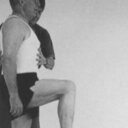Hepatoprotection of 1β-hydroxyeuscaphic acid - the major constituent from Rubus aleaefolius against CCl4-induced injury in hepatocytes cells.
Ключавыя словы
Рэферат
BACKGROUND
Rubus aleaefolius Poir. (Rosaceae) is used as a folk medicine to treat various types of hepatitis with significant effects in Fujian Province of China. The ethyl acetate fraction of R. aleaefolius root ethanol extract proved effective after our testing in vivo animal experiments.
OBJECTIVE
The protective effects of a major constituent, 1β-hydroxyeuscaphic acid isolated from R. aleaefolius was first investigated against carbon tetrachloride (CCl4)-induced injury in liver cells from hepatocytes cell line (BRL-3A).
METHODS
Treatment of BRL-3A with CCl4 led to generation of free radicals detected after a 2 h incubation and produced cell injury demonstrated by increased leakage of alanine aminotransaminase (ALT) and aspartate aminotransaminase (AST) in the media. Exposure to CCl4 caused apoptosis to cells but did not induce lipid peroxidation. Following treatment with 1β-hydroxyeuscaphic acid at doses ranging from 1 to 100 µg/mL for 24 h, cellular morphology, cell growth function (MTT assay), ALT, AST, malondialdehyde (MDA) and superoxide dismutase (SOD) were assessed and evaluated under control and exposed conditions.
RESULTS
The IC50 of 1β-hydroxyeuscaphic acid was 15 μg/mL. Exposure of injured BRL-3A at 20 μg/mL changed abnormal size, cellular shrinkage, and enhanced regulation. ALT, AST, MDA enzyme levels were reduced and SOD activity was increased.
CONCLUSIONS
Treatment with 1β-hydroxyeuscaphic acid has significant hepatoprotective activity by lowering the leakage of intracellular enzymes, reducing the oxidation of proteins and decreasing the incidence of apoptosis. These results provide a basis for confirming the traditional uses of R. aleaefolius in treating hepatic diseases.



